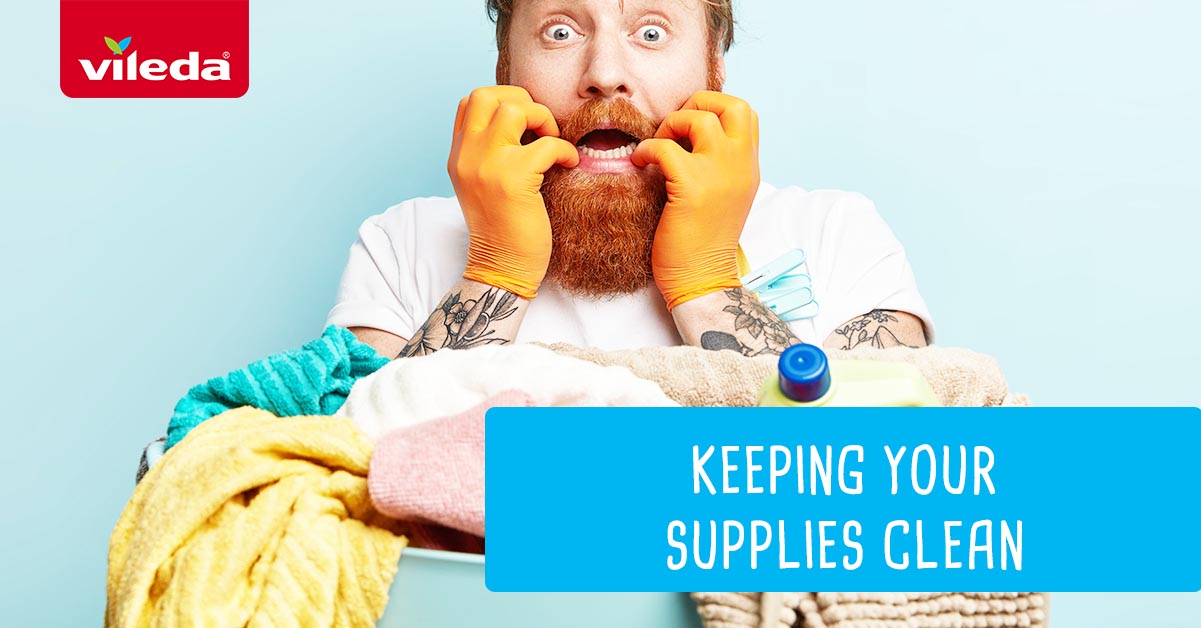
If you don’t have a cupboard full by now, make sure you stock up on these colourful cleaning companions!
If you already have a rainbow array of cloths on standby or some trusty classic sponges, you may not know there are some super handy tricks to keeping them clean and giving them some extra longevity. So, we are here today to tell you how to keep them brightening up your world.

Microfibre caused quite a stir when it first hit our shelves, gone were shabby rags and in came microfibre. Arriving in all kinds of shapes and sizes to suit your cleaning requirements, everyone wanted one of these in their cupboards. If you don’t have a kitchen full by now, make sure you stock up on these cleaning essentials.
The secret of microfibre is all in the fibre, which is precisely why they pick up dirt, debris, grime and dust. Though that’s genuinely positive for cleaning, you want to get rid of that before you launch them into the washing machine.
After each use, give cloths them a good hand rinse to remove cling-on dirt. Ready to wash? Not just yet! Microfibre is just so darn good at picking up bits, they will attract everything else in your washing machine too (including particles of lint in your clothes). So, make sure you separate them from the rest of your laundry. And before you hurl them across and hit start, set the washing machine to 30 degrees max and don’t repeat, don’t add any detergent!

Okay, so you can add detergent in extreme cases. Try and use a scent and dye-free detergent, and do not be tempted to throw in some bleach or fabric softener as this only serves to ruin or clog the fibres. Don’t put them in the dryer, they can burn or melt.

By now, it won’t come as news to you that the sponge in your kitchen could be harbouring several thousand, potentially millions of bacteria and mould spores. While we all love company, this isn’t the kind you want to keep.
While it might sound strange to you to clean your sponges if you stop and think about the jobs you use them for it makes absolute sense!
Bleach is the most effective way to clean a sponge, and plenty of studies have found bleach it removes 99.9% of bacteria. To clean your dirty sponge with bleach, mix ¾ cup of bleach into 2 litres of water. Let the sponge soak for at least 5 minutes, then rinse well with water.
If you aren’t a bleach fan, soak your sponge overnight in a mixture of 1 cup hot water, ½ cup white vinegar, and 3 tablespoons salt. Rinse it properly in the morning and voila, sparkly sponges.
Another way of cleaning your sponges could be popping them into the dishwasher along with your dirty dishes, or the microwave. For the second option, just place the sponge in the microwave, saturating it in ½ cup of water, then heat it on high for one minute.
There comes a time in every sponge’s lifespan when no amount of cleaning can return it to a cleanliness level suitable for use, so make sure your sponges stay as fresh as can be!

All in all, you don’t have to part with your cleaning tools so quickly if you take good care of them and give them a good clean. Aside from removing harmful bacteria which nobody wants sitting around, you also get rid of that ghastly smell… And don’t pretend you don’t know what we mean!

